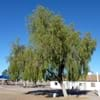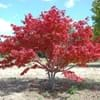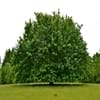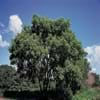Life Span
Perennial
Biennial and Perennial
Origin
Australia
Europe, Western Asia
Types
Not Available
Not Available
Habitat
Tropical Forests
waste ground, wastelands
USDA Hardiness Zone
10-11
4-9
Sunset Zone
8, 9, 12, 13, 14, 15, 16, 17, 18, 19, 20, 21, 22, 23, 24
A1, A2, A3, H1, H2, 1a, 1b, 2a, 2b, 3a, 3b, 4, 5, 6, 7, 8, 9, 10, 11, 12, 13, 14, 15, 16, 17, 18, 19, 20, 21, 22, 23, 24
Habit
Upright/Erect
Rosette/Stemless
Flower Color
Yellow
Yellow
Flower Color Modifier
Bicolor
Bicolor
Fruit Color
Tan
Brown, Black
Leaf Color in Spring
Dark Green
Green
Leaf Color in Summer
Dark Green
Green
Leaf Color in Fall
Dark Green
Green
Leaf Color in Winter
Dark Green
Not Available
Leaf Shape
Narrow
Pinnate
Plant Season
Not Available
Summer
Sunlight
Full Sun
Full Sun
Type of Soil
Clay, Loam, Sand
Loam
The pH of Soil
Acidic, Neutral
Neutral
Soil Drainage
Well drained
Well drained
Bloom Time
Fall, Winter
Summer
Tolerances
Drought
Drought
Where to Plant?
Ground
Ground, Pot
How to Plant?
Seedlings
Seedlings
Plant Maintenance
Medium
Medium
Watering Requirements
Average Water Needs
Average Water Needs, Do Not over Water, Keep the ground moist but not water-logged
In Summer
Lots of watering
Lots of watering
In Spring
Moderate
Moderate
In Winter
Average Water
Average Water
Soil pH
Acidic, Neutral
Neutral
Soil Type
Clay, Loam, Sand
Loam
Soil Drainage Capacity
Well drained
Well drained
Sun Exposure
Full Sun
Full Sun
Pruning
Remove damaged leaves, Remove dead branches, Remove dead leaves
Remove damaged leaves, Remove dead branches, Remove dead leaves
Fertilizers
All-Purpose Liquid Fertilizer
All-Purpose Liquid Fertilizer
Pests and Diseases
Red blotch
Aphids, Armyworm, Cutworms, Downy mildew, Pitch canker, Red blotch
Plant Tolerance
Drought
Drought
Flowers
Insignificant
Showy
Flower Petal Number
Single
Not Available
Fragrant Bark/Stem
No
Yes
Foliage Texture
Fine
Fine
Foliage Sheen
Matte
Matte
Attracts
Butterflies
Butterflies
Allergy
Not Available
Stomach burn
Aesthetic Uses
Showy Purposes
Not Used For Aesthetic Purpose
Beauty Benefits
Not Available
Blood purifying, Good for skin
Environmental Uses
Air purification
Air purification
Medicinal Uses
Not Available
Aphrodisiac
Part of Plant Used
Flowers, Root, Seeds
Root
Other Uses
Charcoal, Edible yellow dye is obtained, Used As Food
Food for animals, Used as a nutritious food item
Used As Indoor Plant
No
Yes
Used As Outdoor Plant
Yes
Yes
Garden Design
Screening / Wind Break, Shade Trees, Street Trees
Edible, Herb, Vegetable
Botanical Name
ACACIA salicina
PASTINACA sativa
Common Name
Cooba, Willow Acacia
Parsnip
In Hindi
willow acacia
चुकंदर
In German
Weiden Akazie
Pastinake
In French
saule acacia
Panais
In Spanish
acacia sauce
Chirivía
In Greek
ιτιά ακακίας
Είδος δαυκίου
In Portuguese
salgueiro de acácia
cherivia
In Polish
wierzba akacji
Pasternak
In Latin
lignis salices
parsnip
Phylum
Magnoliophyta
Magnoliophyta
Class
Magnoliopsida
Magnoliopsida
Clade
Angiosperms, Eudicots, Rosids
Angiosperms, Asterids, Eudicots
Tribe
Not Available
Not Available
Subfamily
Not Available
Not Available
Number of Species
Not Available
Not Available
Properties of Willow Acacia and Parsnip
Wondering what are the properties of Willow Acacia and Parsnip? We provide you with everything About Willow Acacia and Parsnip. Willow Acacia doesn't have thorns and Parsnip doesn't have thorns. Also Willow Acacia does not have fragrant flowers. Willow Acacia has allergic reactions like Not Available and Parsnip has allergic reactions like Not Available. Compare all the properties and characteristics of these two plants. Find out which of these plant can be used as indoor plant. If you are interested to decorate your house and garden, find out aesthetic uses, compare them and select the plant which will beautify your surrounding. Along with beautification, try comparing medicinal and edible uses of Willow Acacia and Parsnip and you can choose the plant having best and most benefits.
Season and Care of Willow Acacia and Parsnip
Season and care of Willow Acacia and Parsnip is important to know. While considering everything about Willow Acacia and Parsnip Care, growing season is an essential factor. Willow Acacia season is Not Available and Parsnip season is Not Available. The type of soil for Willow Acacia is Clay, Loam, Sand and for Parsnip is Loam while the PH of soil for Willow Acacia is Acidic, Neutral and for Parsnip is Neutral.
Willow Acacia and Parsnip Physical Information
Willow Acacia and Parsnip physical information is very important for comparison. Willow Acacia height is 610.00 cm and width 370.00 cm whereas Parsnip height is 15.20 cm and width 7.60 cm. The color specification of Willow Acacia and Parsnip are as follows:
Willow Acacia flower color: Yellow
Willow Acacia leaf color: Dark Green
Parsnip flower color: Yellow
- Parsnip leaf color: Green
Care of Willow Acacia and Parsnip
Care of Willow Acacia and Parsnip include pruning, fertilizers, watering etc. Willow Acacia pruning is done Remove damaged leaves, Remove dead branches and Remove dead leaves and Parsnip pruning is done Remove damaged leaves, Remove dead branches and Remove dead leaves. In summer Willow Acacia needs Lots of watering and in winter, it needs Average Water. Whereas, in summer Parsnip needs Lots of watering and in winter, it needs Average Water.





